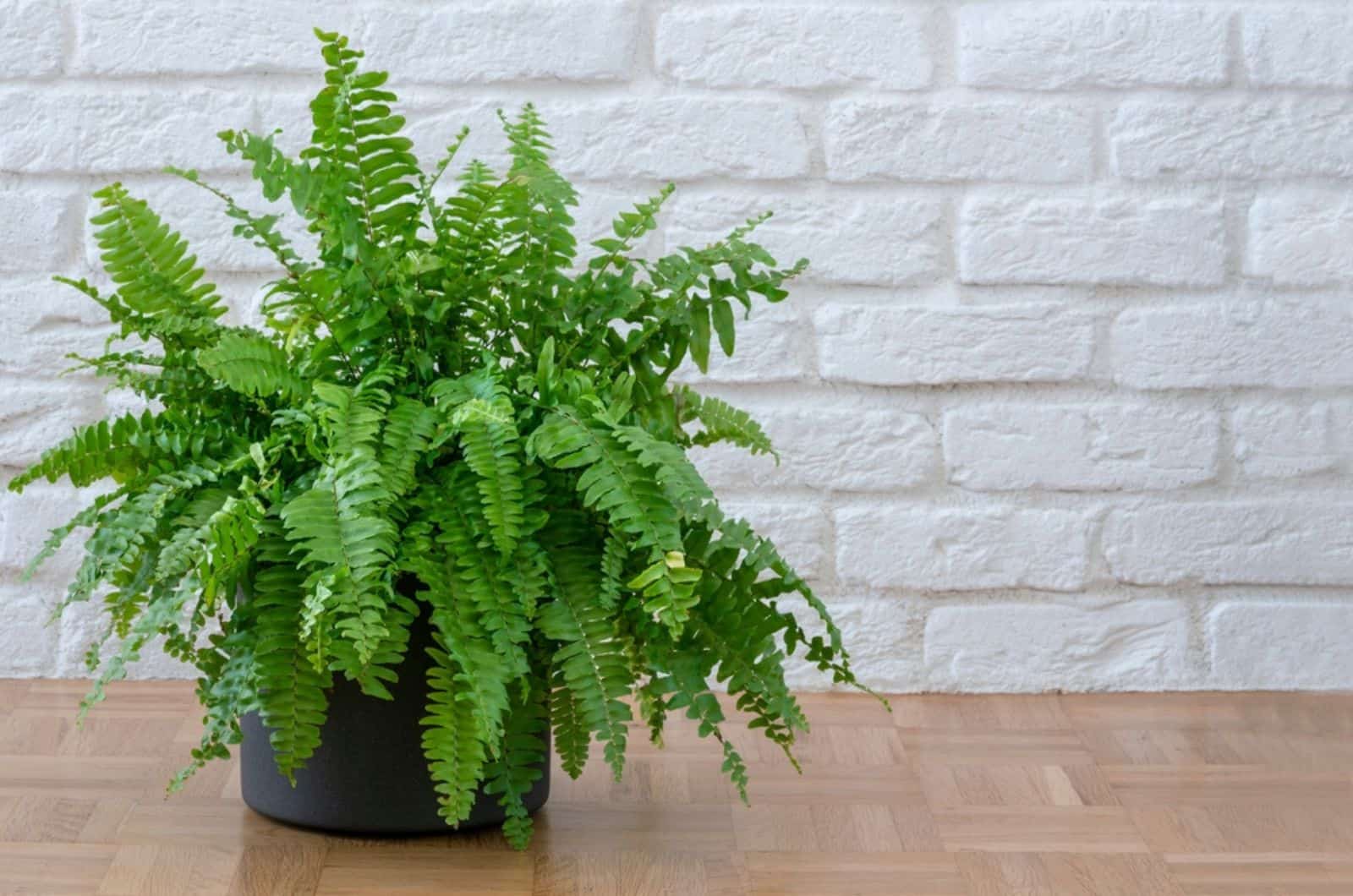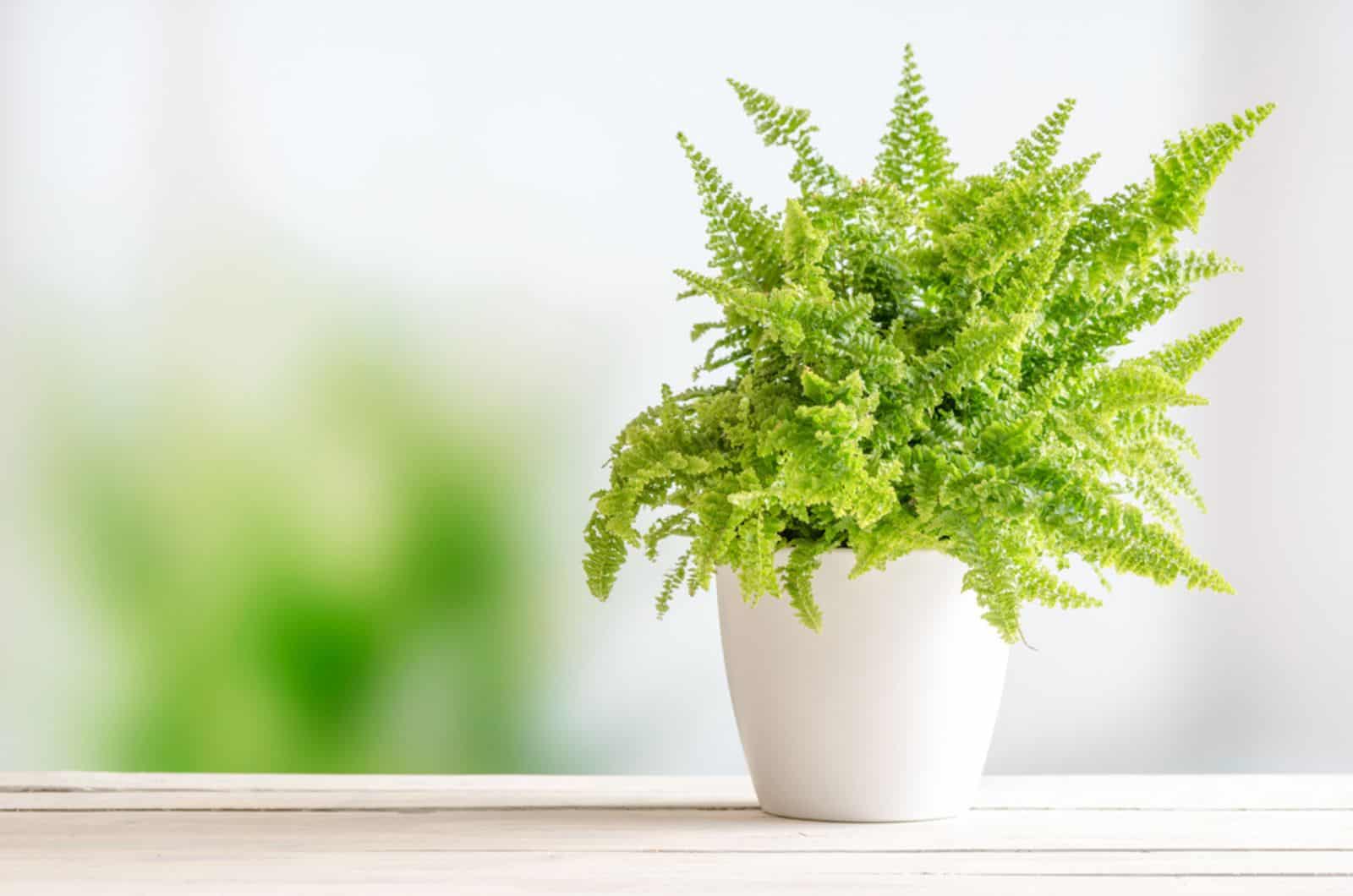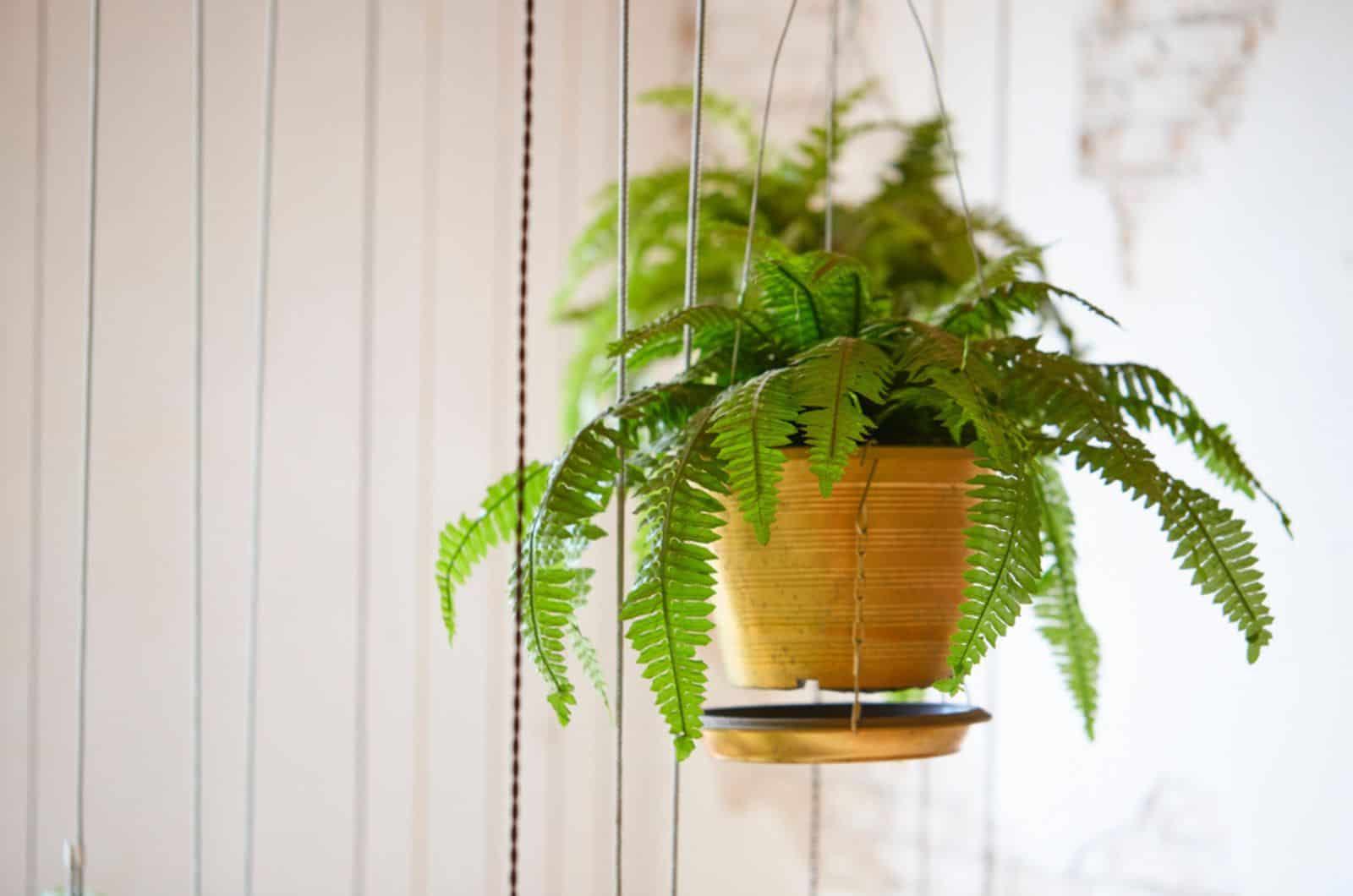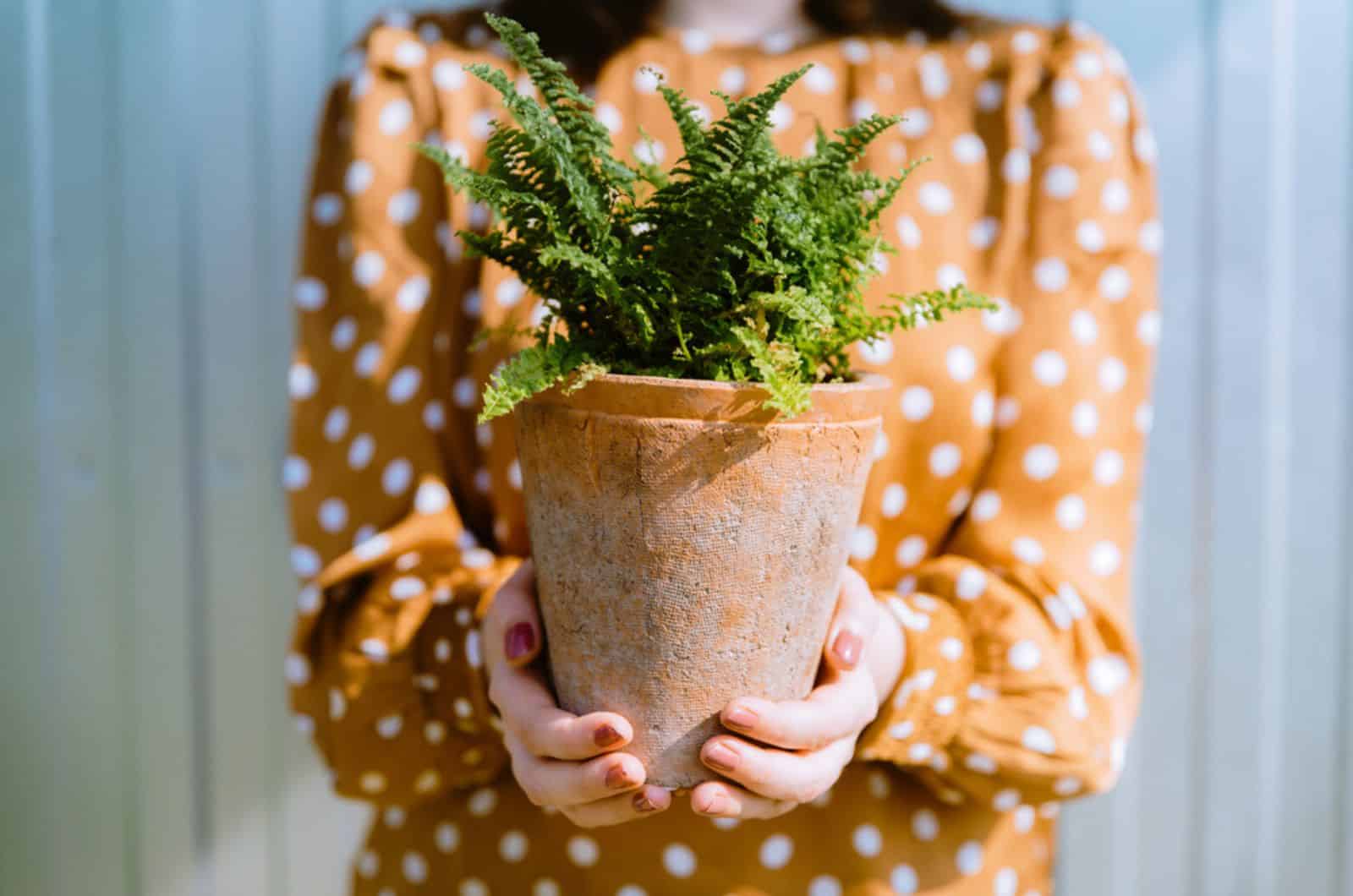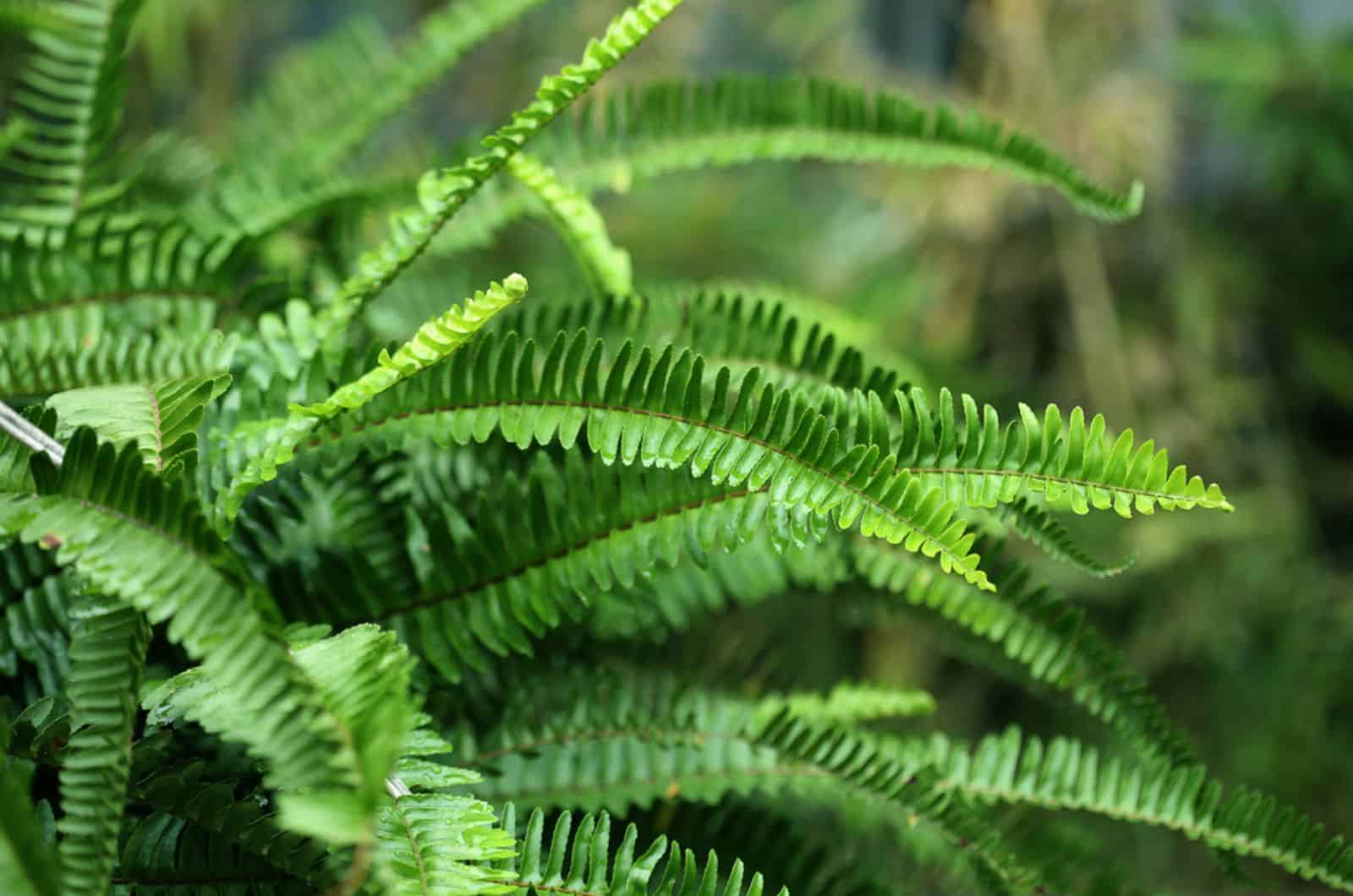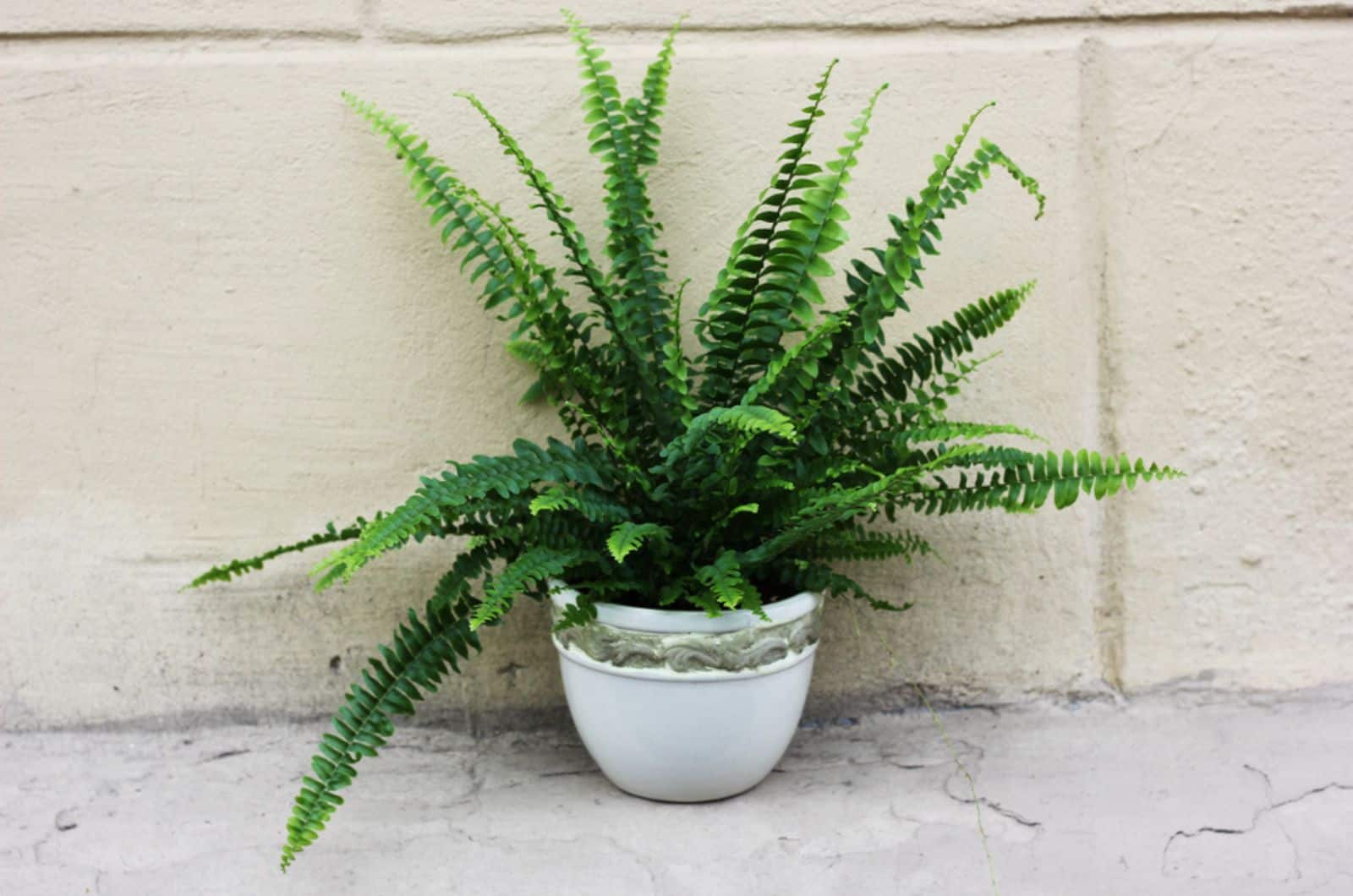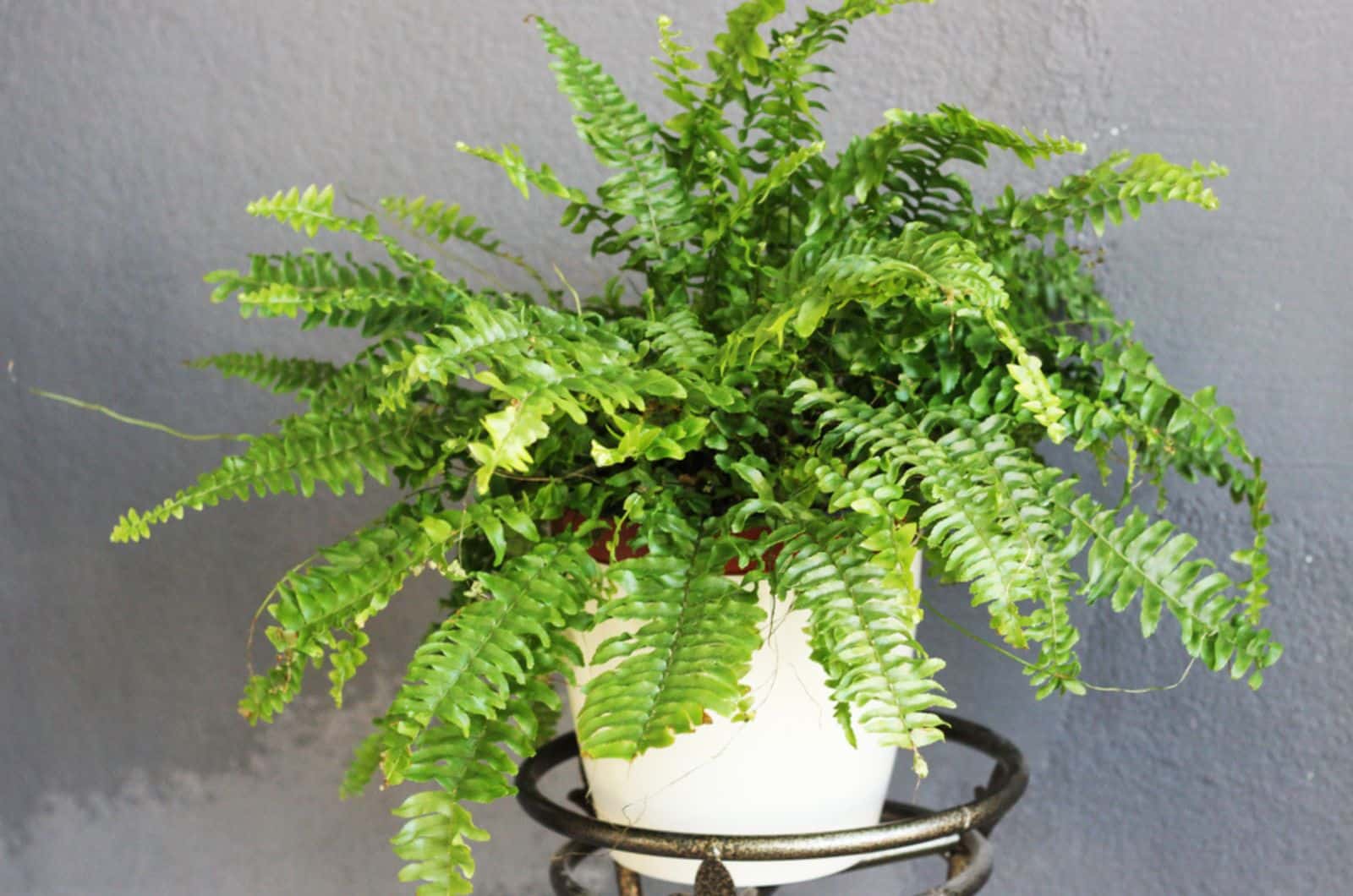Oh, how a little texture can transform your interior design! And I have a perfect plant for it: the Boston fern.
There are many cultivars of this plant with attractive green fronds, but the one I wish to talk about is particularly soft and feathery.
Fluffy Ruffle fern care involves a few basics you need to follow in order to maintain your plant’s good health, but it really isn’t that difficult once you get the gist of it.
It needs some water, sunlight, food, and well-draining soil to thrive!
There are a couple of other things I’d like to mention as well, such as common issues you might have to deal with and the beautiful characteristics that make this fern so desirable.
Before we get into all of that, let’s look at the general specifics of this plant:
[table id=314 /]
Fluffy Ruffle Fern Care
This ruffle fern is a low-maintenance plant, which means that it isn’t very demanding. Simply ensure that it gets some light, water it whenever the topsoil feels dry to the touch, and plant it in a well-draining growing medium.
This houseplant requires slightly more effort to keep healthy, but there are shortcuts (that work) to getting there. We’ll talk about how to quickly raise humidity levels, so they’re perfect for this plant, and also how to repot and propagate it.
Finally, cleaning and pruning are key parts of Fluffy Ruffle fern plant care, so we’ll say a word or two about these needs as well.
Not everything is so gloomy! The Fluffy Ruffle fern is an amazing option for many zen garden ideas on a budget and will complement both indoor and outdoor gardens.
You just have to adjust the care to your climate, and that’s it!
Light Requirements
This fern is an ideal indoor plant as it doesn’t require too much light. You can grow it outside in warm regions, but bear in mind that direct sunlight can burn the fronds and leave it looking sad.
A sheltered outdoor area, such as an east-facing part of your garden underneath a tall tree, would be perfect. You can always manipulate the environment and make some artificial shade or cover your plant with a shade cloth to keep it safe during the afternoon sun.
Growing this plant indoors requires much less preparation. You can simply place it near an east-facing window or anywhere with indirect sunlight, and it will thrive.
However, the Boston fern also belongs to the list of low-light indoor hanging plants, so you can keep it in a planter facing north as well.
However, no plant can actually grow in the dark, and if you notice loss of color, slow growth, and smaller leaves, you should consider getting some artificial lights for plants or gradually introduce this plant to bright indirect light.
Water And Humidity
The Fluffy Ruffle fern benefits from regular watering and needs to be irrigated approximately once a week. However, that mostly depends on your region’s climate, so you should always check the soil before watering.
Wait until the top 2-3 inches of the soil are dry before irrigating this plant. You can check for moisture with your finger or by using a moisture meter.
You should water this plant more frequently in hot, arid climates and during summertime. In winter, you can reduce the watering frequency by half because that’s when this plant enters dormancy and doesn’t need that much water.
The soil also takes longer to dry as there isn’t scorching summer sun to sap the moisture.
Try not to wet the leaves when watering this fern plant, as it can result in mold and other unsightly issues.
You should always water this plant until you notice excess liquid coming out through the drainage holes. Let it completely drain away, and then empty the tray.
Humidity
Preferred moisture levels shouldn’t be ignored when caring for plants. For instance, this fern is a tropical plant that loves high humidity (between 70-90%), so you should raise the air moisture around it as best as possible.
Luckily, we have a couple of methods that work like a charm and require little to no additional work!
Humidifier
Using humidifiers is one of the best ways of raising humidity levels quickly and efficiently. All you need to do is turn it on and let it do its magic.
Other methods, such as grouping plants and using pebble trays, are less reliable in the sense that they cannot drastically increase the amount of air moisture.
Placing plants on gravel trays can increase the humidity by 7%, which is fine for small plants but not enough for larger ones, especially if you live in drier climates.
Misting
Spraying your plants with water from time to time is a foolproof method of increasing humidity, and it doesn’t require too much work!
We may sometimes overdo it and create more issues than we’ve solved. For instance, constantly wet foliage will lead to fast growth and reproduction of fungi, and your plant will likely experience symptoms of leaf spot and powdery mildew.
Thankfully, you can prevent these issues by spraying your plant every 2-3 days and allowing the foliage to dry between misting.
Terrarium
Growing your Fluffy Ruffle fern in a terrarium is an excellent way to improve your interior decor and create a perfect environment for its growth.
The glass walls will prevent moisture from dissipating and increase the humidity levels around your plants.
Closed terrariums don’t need to be watered more than once a month, just open the lid every couple of weeks to let some fresh air in, and your plant should be fine.
Temperature
If you live in a region that falls under USDA zones 9-11, you can grow this plant outside, and displaying it outdoors in warmer weather to accompany your other fabulous evergreen ferns will be breathtaking!
Of course, frost can kill the above-ground plant, but it will bounce back in spring with new leaves.
However, if you live in colder climates, you should move your plant indoors once the weather cools down or keep it inside all year long.
This fern prefers to be at room temperature, so anything between 60-80°F works. Temperatures lower than 50°F can kill your plant, so keep the thermostat on at least 60°F.
Sudden temperature swings can lead to leaves falling off, so avoid keeping this plant near AC vents, drafty windows, and heaters.
Soil And Fertilizer
The good news is that you don’t have to make your own potting mix for this plant if you don’t feel like it because there are ready-made blends you can use straight out of the bag.
However, it’s also good to know what kind of soil this fern prefers and how to make it if you’re ever in a pinch or simply enjoy making your own mixes.
First of all, the growing medium for this plant needs to be fast-draining, or else the soil could get clogged with water and lead to root rot.
Second of all, the pH level should be slightly acidic, between 5.0-6.5.
Now that you know these details, we can concentrate on the type of soil you should mix to provide your plants with the ideal home.
All you have to do is mix equal parts potting soil, sphagnum peat moss, and perlite. You can even add some sand for gardening, but not too much, or it’ll make the mix too draining, and you’ll have to water your plants constantly!
Fertilizer
The Fluffy Ruffles fern requires monthly fertilization, but that doesn’t have to be such a chore. You can feed this plant when watering it to reduce the amount of work you have to do.
Another perk of owning one of these plants is that you can feed it with a regular houseplant fertilizer diluted to half-strength (or more if indicated on the package).
Many growers prefer slow-release fertilizers because you can apply a small amount that lasts 6-12 months, depending on the plant’s needs and the strength of the fertilizer.
Repotting
Even though this plant is slow-growing, it still requires repotting every two years. If it hasn’t reached its mature height yet, you should replant it in a new pot 1-2 sizes larger than the previous one.
However, if the plant hasn’t really grown since the last time you repotted it, you can leave it in the same pot; just change the soil.
A fresh growing medium introduces more nutrients, and your plant will definitely liven up after repotting.
When moving your plant to a different container (or changing the growing medium), you should dig the soil a bit and gently pull the plant out.
Fill the new (or old) pot with the fresh substrate, place your plant in it, cover the roots with more soil, and then water thoroughly.
Many plants go through transplant shock after being moved to a different medium and container, and to prevent that from happening, you should ensure that your plant is well-hydrated.
Propagation
No care instructions are complete without a propagation guide, so we’ll discuss the easiest way you can reproduce this fern and surprise your friends with a new plant!
Step 1. This plant can be propagated by offsets, so you should find a healthy one and carefully separate its roots from the mother plant.
Pro tip: If you can’t divide the plant easily, you can use a sharp, sterilized knife or pruning shears to cut the roots.
Step 2. Place the plantlet into a nursery pot filled with fresh soil and water it thoroughly. Maintain consistent soil moisture to provide your new plant with the best growing conditions.
Step 3. Put a humidity dome or plastic sheet around your plant to prevent moisture loss and maintain the high humidity levels needed for proper development.
Step 4. Place your plant in a location with bright indirect light and ensure that the temperature is somewhere between 60-70°F.
Step 5. Remove the plastic sheet or dome once you notice the plant has started growing. Tend to your new plant the same way you did the old one.
Cleaning And Pruning
Cleaning and pruning are essential parts of any plant care routine but are frequently neglected, especially cleaning.
The dust sitting on your plant’s leaves interrupts the course of photosynthesis, and your plant might experience some difficulties as a result.
You can remove dirt by putting your plant under a slow flow of lukewarm water. If you’re afraid your plant might catch a fungal disease, you can pat dry the fronds dry afterwards.
Pruning can also strengthen your plant, even though this statement might seem contradictory at first. Diseased, discolored, old, and dead leaves drain your plant of energy and take up space where new leaves could grow.
New leaves photosynthesize and produce more food and energy for further development, unlike old and dying foliage.
Remove discolored and diseased leaves for a better and healthier plant.
Common Issues With The Nephrolepis Exaltata
This plant can be found in many different plant collections and is a great companion to philodendrons and pothos plants.
But just like its green buddies, this fern can also fall victim to pest infestations and diseases. Therefore, knowing the pros and cons of neem oil and copper fungicide can be beneficial.
For instance, neem oil can be used to fight pests and fungi, whereas copper fungicide cannot repel pests. However, the latter product will act faster and relieve your plant of fungi much quicker than neem oil.
You just have to decide which product is more suited for your plant and its issue.
Before treating your plant, you first have to know what’s wrong with it, and in the next section, you will learn about what common pests and diseases afflict this fern.
Pests
The most common pests that affect this plant are spider mites and scales, and though they can do a lot of damage, they are easily dealt with.
As soon as you notice a single bug on your Ruffle Fern, move it away from your other plants, so the infestation doesn’t spread.
If there are only a couple of pests, you can easily get rid of them with a Q-tip dipped in rubbing alcohol or neem oil.
However, larger infestations require the use of deadlier weapons, so you should get some pesticides to help you deal with the invasion.
You can also try putting your plant under a stream of running water to clean the dust – but if that doesn’t work, insecticides will have to do.
Diseases
This plant usually suffers from one disease: root rot. This infection is deadly, so never neglect your plant!
Root rot is a fungal disease caused by overwatering, and it infects your plant’s roots, causing them to have difficulty uptaking water and nutrients.
So, it’s not surprising that plants with root rot start drooping, stop growing, and become yellow, or brown, or see their color simply fade.
If you notice any of these symptoms, check the soil, and if it’s dripping wet, you should take your plant out of its container and carefully examine the roots.
Remove any mushy and dark roots, spray the rest with some fungicide, and repot your fern in fresh soil and a sterilized container.
If the disease is advanced and has already spread to your plant’s stem, try to find some healthy parts you can propagate and save your plant that way.
Main Features Of The Fluffy Ruffle Fern
Once you hear how easy it is to care for this succulent, you’ll be excited to add it to your collection!
When you lay eyes on the silky and bushy fronds, you’ll know that it is anything but a drought-loving succulent.
Tripinnate fronds are densely clumped and pointy at the tip.
The plants produce sterile spores, so they cannot be used for reproduction, but there will always be enough offsets to grow and plant them in hanging baskets.
FAQ
We’re finished with the care guide, but there are some other things we need to discuss before calling it a day.
In this section, you will find the answers to the most frequently asked questions and improve your knowledge of Fluffy Ruffle fern care.
What does it mean when a ruffle fern is wilted?
The most common reason that the ruffle fern becomes wilted and droopy is overwatering, so you should look for underlying causes.
You might think that you have watered it too frequently, but that doesn’t always have to be the case. Heavy soils and pots without drainage holes can lead to water-clogging, even if you only water your plant once a week.
Another thing we usually overlook is the water that pools in the tray. You shouldn’t let your plant sit in a tray filled with water after irrigating it.
Luckily, these issues can be easily fixed.
You have to either adjust your watering schedule and irrigate your fern only when the topsoil feels dry or repot your plant into fresh, well-draining soil and a pot with drainage holes.
Of course, remember to empty the tray 30 minutes after watering at most.
Overwatering can also lead to yellow leaves, stunted growth, and root rot, so it’s better to deal with it before these issues arise.
What are the benefits of a fluffy ruffle fern?
One of the main benefits of this plant is its air purifying ability, so you can enjoy its fantastic looks and the fresh air it provides.
Of course, it will take many plants to feel the difference, but they still look amazing and have healing effects on your psyche.
Plants and gardening are proven to reduce levels of stress, anxiety, and even depression.
These plants can also be used in zen gardens and bring you the peace of mind we all crave.
Conclusion
Now you know that Fluffy Ruffle fern care isn’t too demanding, quite the opposite, in fact; this variety simply requires indirect light, moist and well-draining soil, high humidity, mild temperatures, and fertilization once a month.
It is a slow-grower, so you don’t have to repot it more than every other year.
The only thing you do need to do is clean the dust off the triangular fronds, and don’t forget to prune any leaves that don’t look their best!
This article also included some common pests and diseases you might have to deal with when growing this plant, as well as effective treatments that will have your plant back up and running in no time!
(Hopefully, not literally!)
We also described the main features of the Fluffy Ruffle fern as they are the main reason we all buy this plant.
Until next time!

